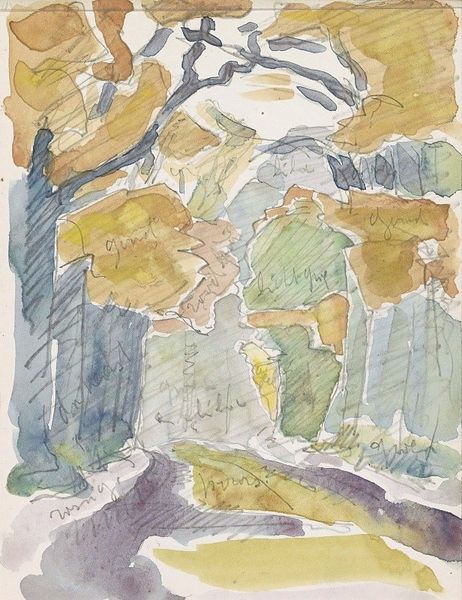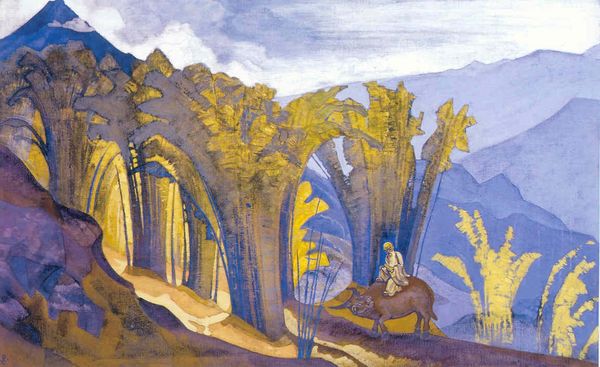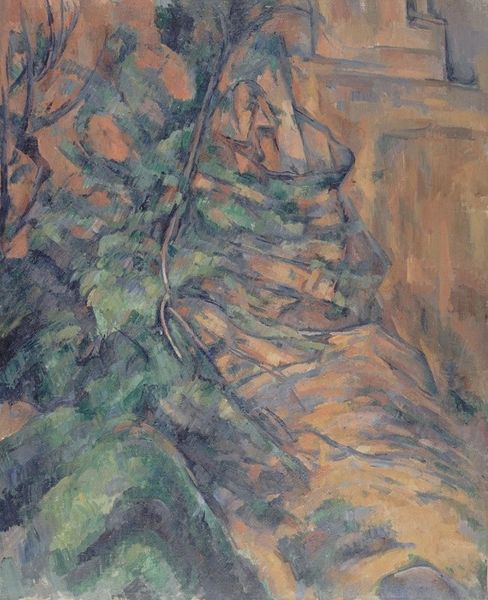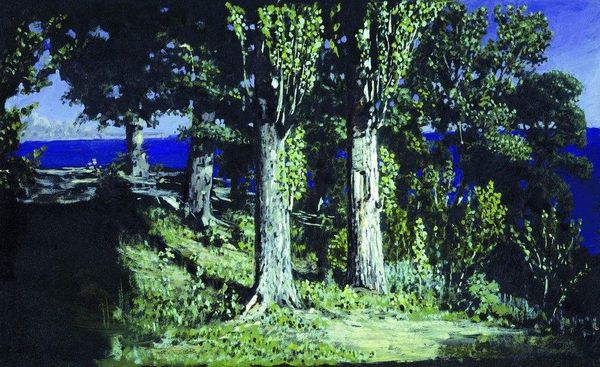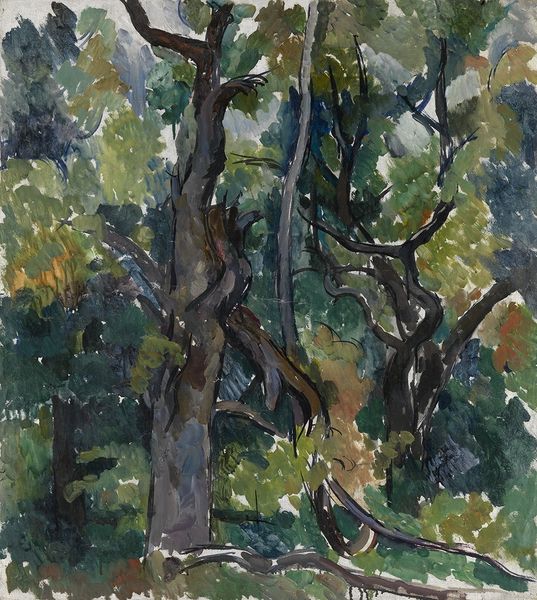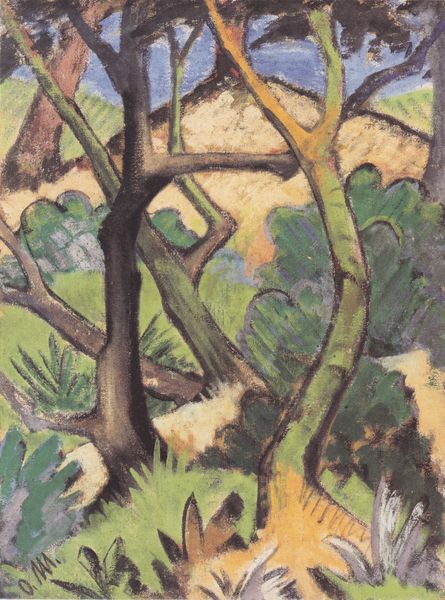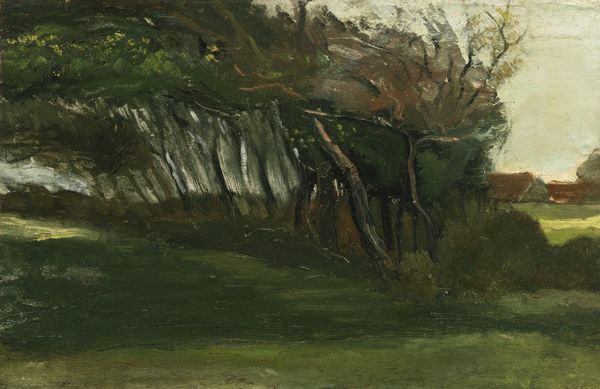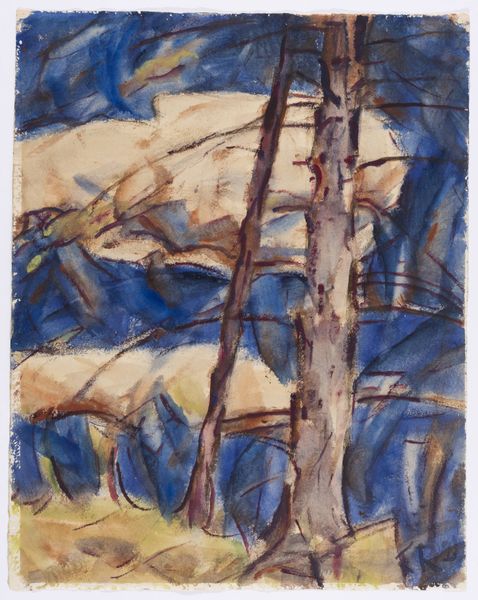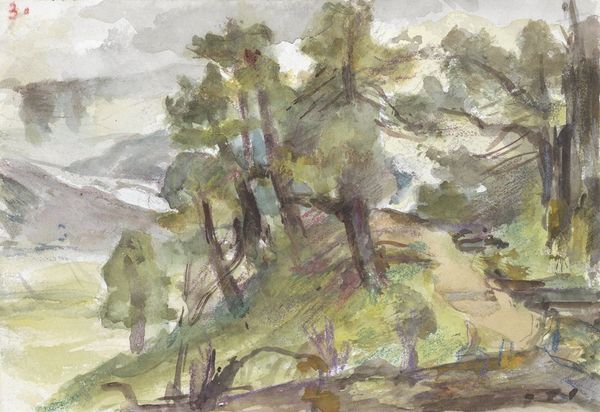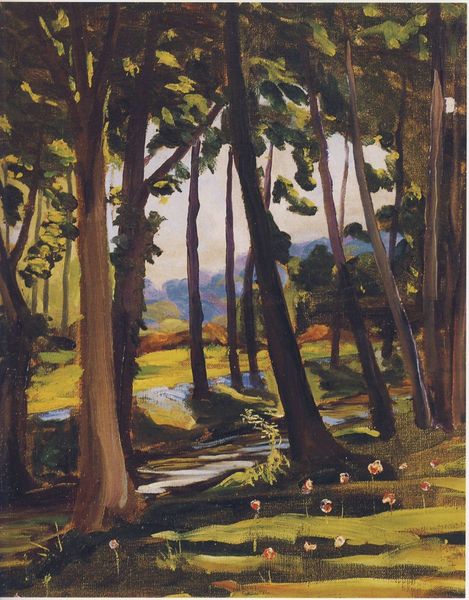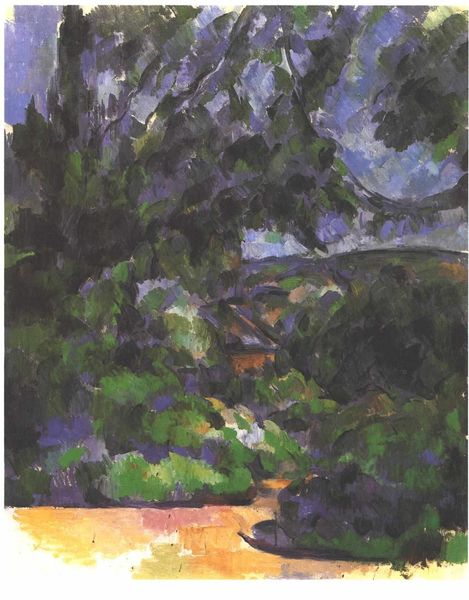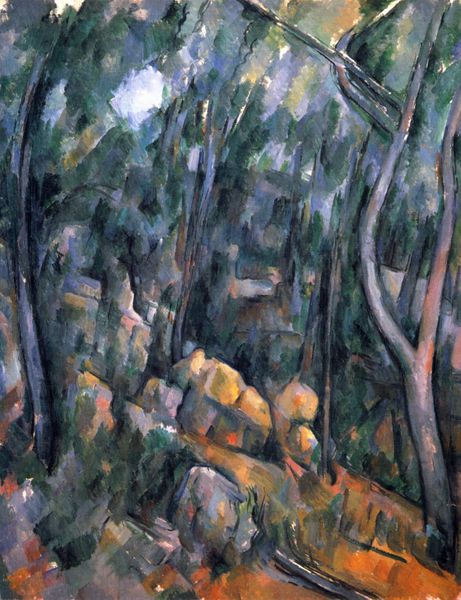
Copyright: Henri Matisse,Fair Use
Curator: Look, let's consider this canvas now. This is Matisse's "Tahiti Landscape," painted in 1931. It's an oil-on-canvas work that shimmers with light and the thick impasto marks throughout the scene. Editor: Immediately, it gives me this raw, almost urgent feeling. Like a snatched moment. Not necessarily representational of what a jungle looks like but...it’s his memory of a jungle. Or his gut reaction. A dense, pulsing green heart. Curator: Well, the painting emerged at an interesting time for Matisse. Although titled "Tahiti Landscape," it was completed nearly three decades after his brief sojourn there in 1901, quite removed from direct plein-air observation. These vibrant strokes are memory meeting the moment in the studio. Editor: Memory filtered through feeling, exactly! The way the light dances and pools on the leaves – those hefty strokes – tells me that this wasn't so much about perfectly capturing what was "there," as accessing the felt experience. You almost smell the damp earth. It’s immediate and quite transportive for me. Curator: Precisely. We should also remember how Matisse operated within the wider art market; exotic landscapes sold, and "Tahiti" conjured fantasies of the South Seas, playing into existing desires and expectations. Was it purely from memory, or was there a strategic calculation? Editor: I think it’s always a dance, isn't it? Even the most 'pure' expression happens within a context. To me, the painting reads less as a literal rendering and more like a visceral expression – a riot of sensation on the canvas, which is why I feel like it transcends some possible motive. Like a painter being taken over...you see that energy first and the "strategy," if there, dissolves away. Curator: Agreed; this particular landscape also encapsulates how Post-Impressionist artists worked with vivid colors, divorced from faithful naturalism to prioritize form, structure, and expressive effect, of course. It became an extremely marketable position over the 20th century. Editor: And somehow it’s this push and pull between that almost raw expression and how he knew it might be received, or not, that gives it even more energy for me! So many landscapes lack a real beating heart! Here it breathes... Curator: Indeed. It makes me consider the role of memory and expectation, the individual and the institution in constructing our aesthetic experiences. Editor: Leaving us with more questions, ideally, than answers! Because who wants a story that's neatly tied up with a bow?
Comments
No comments
Be the first to comment and join the conversation on the ultimate creative platform.
